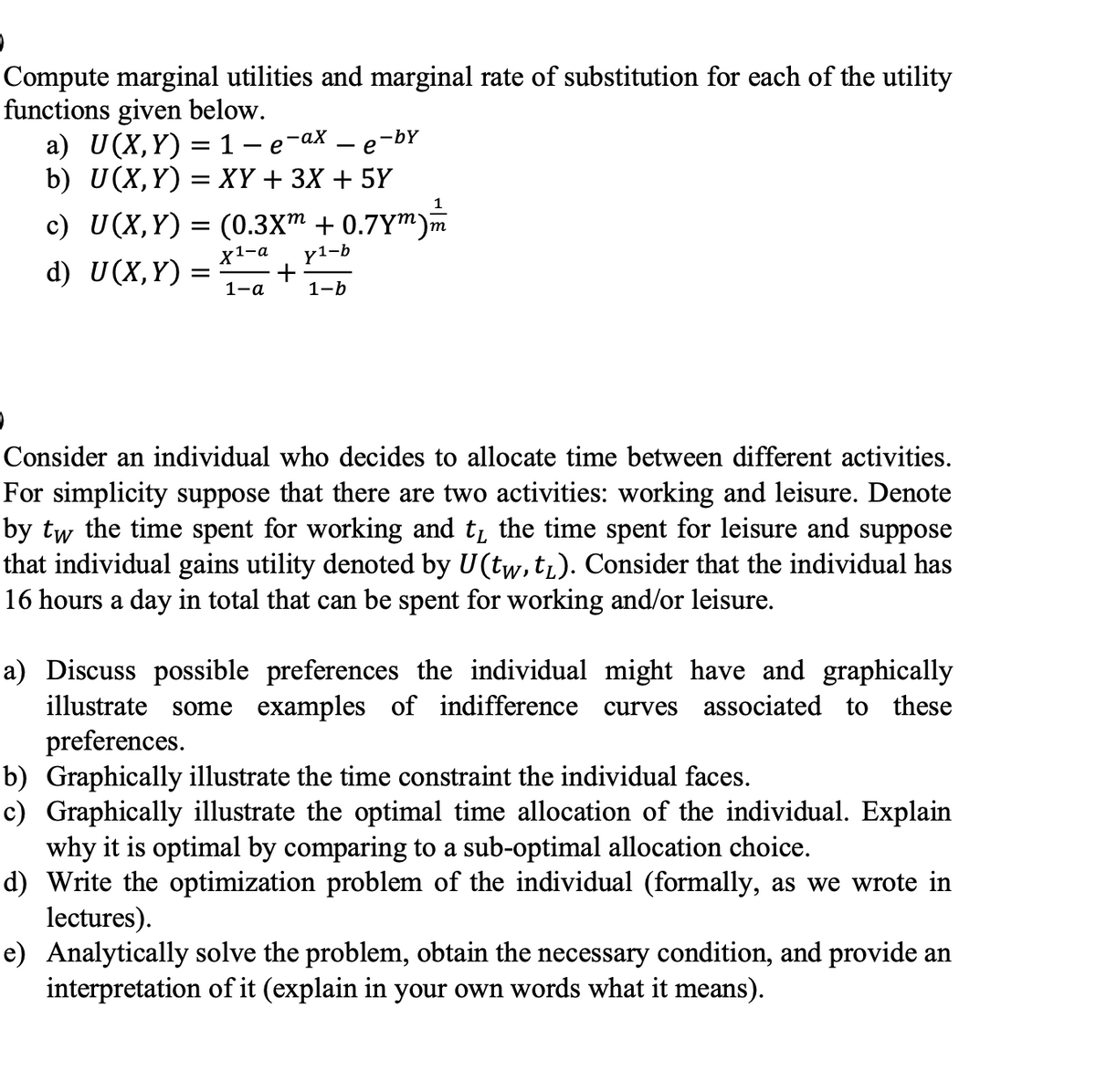Compute marginal utilities and marginal rate of substitution for each of the utility functions given below. a) U(X,Y) = 1- e-ax e-by b) U(X,Y)= XY + 3X + 5Y - 1 c) U(X,Y)= (0.3Xm +0.7Ym) m
Compute marginal utilities and marginal rate of substitution for each of the utility functions given below. a) U(X,Y) = 1- e-ax e-by b) U(X,Y)= XY + 3X + 5Y - 1 c) U(X,Y)= (0.3Xm +0.7Ym) m
Chapter4: Utility Maximization And Choice
Section: Chapter Questions
Problem 4.13P
Related questions
Question
pls explain step by step

Transcribed Image Text:Compute marginal utilities and marginal rate of substitution for each of the utility
functions given below.
-ax
-by
a) U(X,Y)= 1- e - e
b) U(X,Y)= XY + 3X + 5Y
c) U(X,Y)= (0.3xm +0.7Ym)mm
X¹-a yl-b
d) U(X,Y)
1-a
1-b
=
Consider an individual who decides to allocate time between different activities.
For simplicity suppose that there are two activities: working and leisure. Denote
by tw the time spent for working and to the time spent for leisure and suppose
that individual gains utility denoted by U(tw, t₁). Consider that the individual has
16 hours a day in total that can be spent for working and/or leisure.
a) Discuss possible preferences the individual might have and graphically
illustrate some examples of indifference curves associated to these
preferences.
b) Graphically illustrate the time constraint the individual faces.
c) Graphically illustrate the optimal time allocation of the individual. Explain
why it is optimal by comparing to a sub-optimal allocation choice.
d) Write the optimization problem of the individual (formally, as we wrote in
lectures).
e) Analytically solve the problem, obtain the necessary condition, and provide an
interpretation of it (explain your own words what it means).
Expert Solution
This question has been solved!
Explore an expertly crafted, step-by-step solution for a thorough understanding of key concepts.
Step by step
Solved in 4 steps with 4 images

Knowledge Booster
Learn more about
Need a deep-dive on the concept behind this application? Look no further. Learn more about this topic, economics and related others by exploring similar questions and additional content below.Recommended textbooks for you








Exploring Economics
Economics
ISBN:
9781544336329
Author:
Robert L. Sexton
Publisher:
SAGE Publications, Inc
